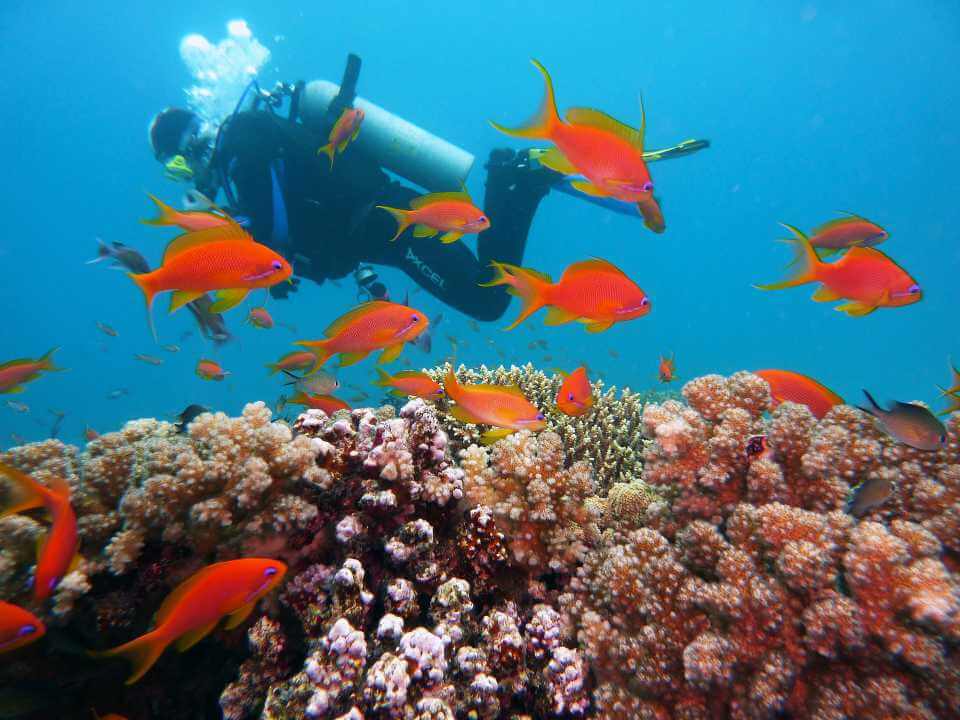Diving and Snorkeling
Sri Lanka is well-known for its diving and snorkeling excursions. Sri Lanka’s on-land beauty is equaled only by its magnificent underwater environment. A unique world of tropical fish, colorful coral, and mystery shipwrecks exists under the waves of the Indian Ocean. The southern coast of Sri Lanka is especially popular since it offers spectacular underwater trips for people who wish to see Sri Lanka from under the sea.
The Sri Lankan waters are constantly warm due to their location 5 to 9 degrees north of the equator, and while in season, they remain at an appealing temperature of roughly 27 degrees Celsius. The two monsoons – the northeast and southwest – dominate sea conditions, allowing for calm seas and clean waters along the island’s southern and western coastlines from November to April, and from April to October along the island’s eastern coast. Diving and snorkeling in Sri Lanka is made more intriguing by the variety of reefs present in the waters surrounding the country.
Sandstone platforms, coral banks, boulders, and rock cliffs can be found both near and far from the beach. The majority of the reefs on the western shore are sandstone platforms. Rock boulder reefs and tiny bordering coral reefs are more abundant on the southwest and southern coasts.
The magnificent seas of Hikkaduwa, Weligama, and Kirinda in the south of Sri Lanka are the ideal places to go snorkeling or scuba diving. The country’s largest reef, ‘Bar Reef,’ is located in the west of the island. It is three nautical miles long and adjacent to the village of Kalpitiya, which is now widely linked with dolphins and kitesurfing. However, the best place to go snorkeling or diving on the island is certainly Pigeon Island, off Nilaveli on the country’s eastern coast.
The brilliant turquoise-colored waters are teeming with fish and coral life, allowing for an exciting underwater trip. Four coral reefs in Sri Lanka have been designated as protected areas. Hikkaduwa, Rumassala, Pigeon Islands, and Bar Reef are among them. They are governed by the Fauna and Flora Protection Ordinance, which is overseen by the Wildlife Conservation Department.
Hikkaduwa features an abundance of tropical fish and coral reefs and is regarded as one of the greatest spots on the Southwest coast for diving and snorkeling. In addition, the town boasts a long-standing diving school. Weligama, located east of Galle, is also an excellent place to travel out into deeper seas in search of sharks and dolphins. Kirinda is a town on the island’s southeast coast that became famous not only for the ‘Great Basses’ shipwreck and the Great and Little Basses reef, but also for Arthur C. Clarke.
At Kirinda, he went diving in order to write his book, ‘The Treasure of the Reef.’ On the west coast, keen snorkelers and scuba divers find the abundance of tropical fish, reef sharks, manta rays, and the occasional turtle to be an alluring mix, which is why the waters of Kalpitiya are so popular between November and early May.
Come along and take part in your own underwater adventure. Dive and snorkeling in Sri Lanka’s waters is suitable for both novice and experienced divers.




